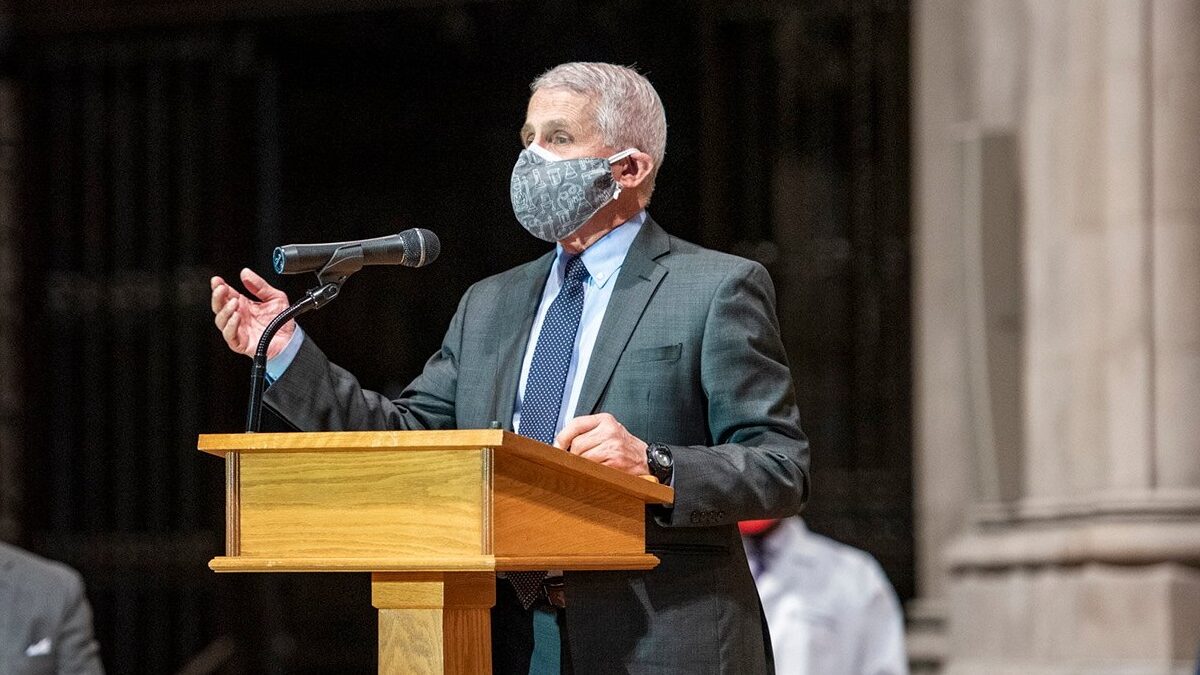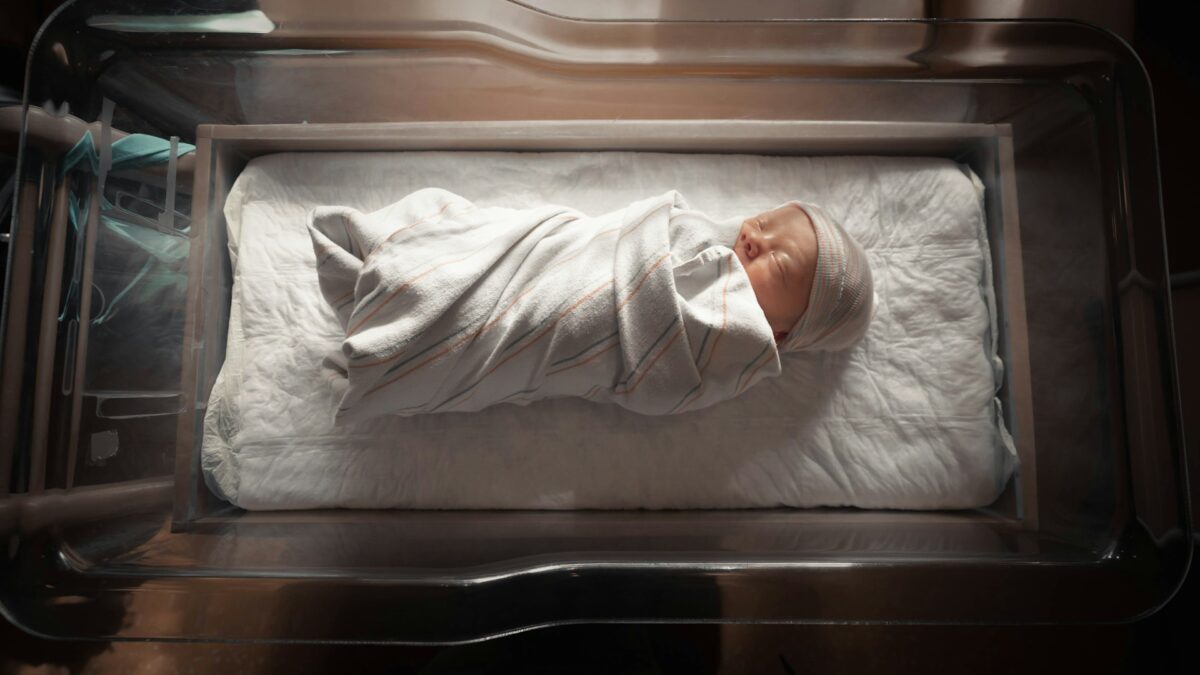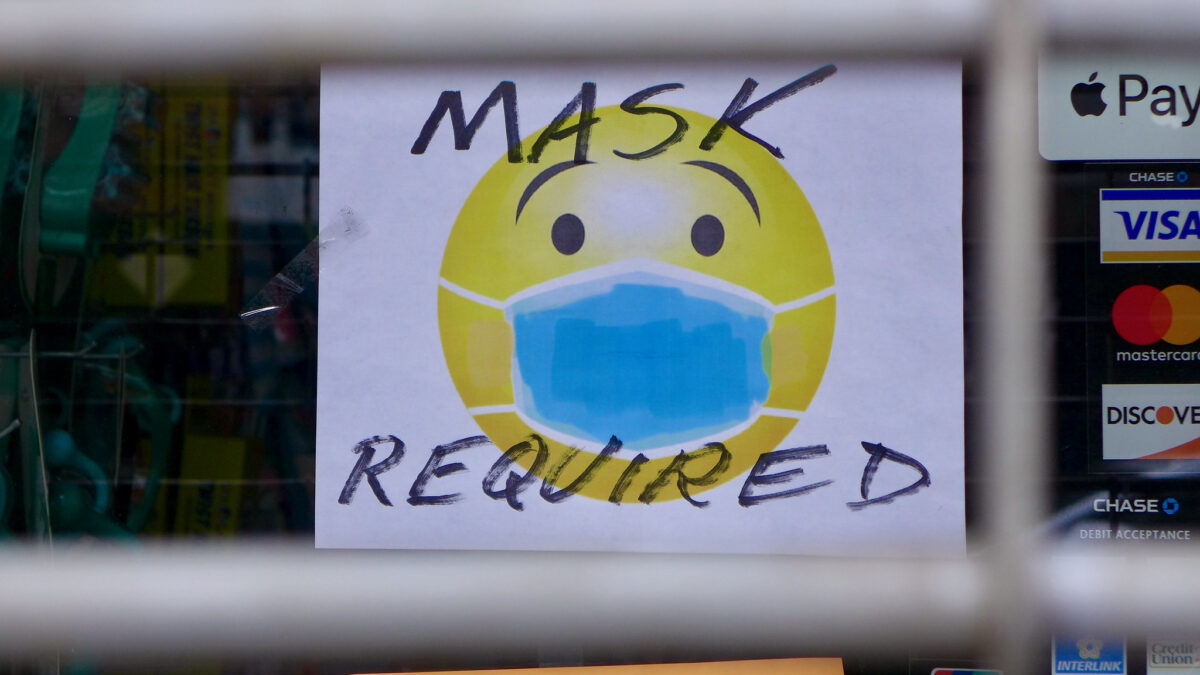Despite the selective amnesia Dr. Anthony Fauci was laboring with this month while testifying before the Select Subcommittee on the Coronavirus Pandemic, a fascinating detail emerged from the testimony, a summary of which was released to the public on Wednesday. According to lawmakers who were there, the former head of the National Institute of Allergy and Infectious Diseases (NIAID) and former chief medical adviser to the president — the man who once equated himself with science itself — offered a stunning concession that the six-foot social distancing edict “sort of just appeared” out of nowhere and was likely not based on scientific data.
Many have argued this for years. Twelve months after the first coronavirus guidelines were issued on March 9, 2020, Tucker Carlson pointed out what a report in the British Medical Journal had contended six months earlier: Social distancing rules that “stipulate a single specific physical distance between individuals to reduce transmission” originate in flawed research from the late 19th century and a longstanding framework that simplistically “dichotomizes respiratory droplets into two sizes.”
So how did this quackery suddenly become trusted “science”? Revisiting the critical February to March 2020 time frame, including Fauci’s emails from the period, provides some insight.
On Feb. 5, 2020, Fauci sent a note to Dr. Nancy Messonnier, the Center for Disease Control and Prevention’s (CDC) director of the National Center for Immunization and Respiratory Diseases and early incident manager for the Covid response, asking whether a Wall Street Journal article from Feb. 2 had misquoted the CDC. The article referred to the virus’ ability to “spread from infected patients without symptoms to close contacts within about 6 feet” (my emphasis). It’s not clear whether it was Messonnier who spoke with the Journal, how she responded to Fauci’s inquiry, or where the information came from.
The six-foot standard had already drifted into public health documents prior to the Covid outbreak. For example, in October 2019, the California Department of Health updated its guidelines for the prevention and control of influenza in nursing facilities, in line with CDC recommendations, for “a distance of six feet between patients with influenza in multi-bed rooms” and the “use of facemasks when within six feet of a patient with suspected or confirmed influenza.”
The updates were supposedly based on “research that demonstrates that respiratory droplets may travel as far as six feet.” However, the “research” wasn’t any innovative, randomized controlled study but rather the CDC’s 2007 hunch, likely based on a 2003 study into the transmission of SARS via infected passengers on an aircraft. This consensus crept into public health speak via guidelines published in places such as the Clinical Infectious Diseases journal and by the National Adult and Influenza Immunization Summit. In April 2020, Quartz (and subsequently Fortune) endeavored to confirm the origins of the six-foot guideline with the CDC, but after “multiple attempts over two weeks, the agency failed to comment.”
To these already shaky foundations, the CDC added in its Feb. 2 quote to the Journal the folklore of asymptomatic spread, which the 2003 SARS study effectively ruled out, and which the World Health Organization-China Joint Mission poured cold water on in its Feb. 28 report. Dr. Bruce Aylward, team lead and senior adviser to the WHO director-general, emphasized that it was an “urban myth” that asymptomatic transmission chains were widely spreading the virus.
Meanwhile, Messonnier was already flagging the likelihood of containment measures. In a Feb. 25 telebriefing, she publicly braced the nation to expect “school closings, workplace shutdowns, and the canceling of large gatherings,” warning of “severe disruption” to everyday life.
On March 1, Fauci asked Messonnier’s opinion on an interim Targeted Layered Mitigation Strategy distributed internally by Dr. Garrett Grisby, director of the Office of Global Affairs at the Department of Health and Human Services (HHS). Then on March 4, Messonnier hosted a working session “to align current activities and next steps to be executed as part of a coordinated HHS response to COVID-19.”
It’s unclear whether the six-foot rule had already wormed its way into the strategizing at this point. However, it’s evident that the extreme social distancing train had left the station.
Following China
Certainly, China and the WHO drove the momentum for adopting stringent containment measures. Although Dr. Aylward admitted he hadn’t seen anything like China’s strategy in his 30 years in the business, the joint mission report enthusiastically endorsed China’s aggressive model. In fact, according to Fauci, it was Dr. Clifford Lane, clinical director at the NIAID and U.S. representative to the WHO delegation to China, who convinced Fauci that the U.S. should emulate China’s lockdowns.
Notwithstanding, the six-foot rule can’t reasonably be blamed on either the WHO or China. It isn’t mentioned in the joint mission report. In fact, photos from the period from China show masked individuals thronging grocery stores and huddled together waiting to be tested in local hospitals, and even the WHO-China delegates crowding together for a group photo. Early on, the WHO was actually advising keeping three feet apart (1 meter), an equally arbitrary recommendation based on 90-year-old research into tuberculosis, and which was applied in places like Italy and France.
Deceptive Claims
In the U.S., the six-foot rule officially emerged between early and mid-March. Experts suddenly shifted from their recommendations on March 4 to wash hands, cover sneezes, and stay home when sick — all measures, as CDC Director Dr. Robert Redfield pointed out, that “we would ask you to do for flu.” On March 9, the earliest CDC guidelines were announced in a White House Coronavirus Taskforce press briefing. Fauci and Dr. Deborah Birx deceptively claimed that the “scientific evidence that informed each of these guidelines” came from research out of Australia. This was apparently news to the Australian researchers who authored the four-day-old, non-peer-reviewed, and inherently flawed paper.
In any case, the Australians didn’t mention six feet either. Yet literally overnight, infection control guidance was arbitrarily defining “close contact” as being within “approximately six feet” of a Covid case “for a prolonged period.” This tenet of the social distancing creed later informed the March 16 “15 days to slow the spread” guidelines, and then the 45-day extension. Already by March 17, hysterical health care professionals were shockingly urging children to “keep at least 6 feet of distance from other children” when playing outside.
The cherry on top is that the WHO, Fauci, Birx, Messonnier, and others all knew from as early as February 2020 that Covid wasn’t dangerous to the vast majority of Americans and that very few would need to be hospitalized. We can be sure they knew because they literally told us.
The implications are sickening. In the forthcoming public hearing, lawmakers need to frogmarch Fauci down memory lane and retrace the decision-making process that unfolded in those pivotal weeks leading up to the first social distancing guidelines. Fauci might be correct that the rules weren’t based on science. But they didn’t write themselves, and the public has a right to know who did. Too many lives were destroyed by the pandemic response travesty for Fauci to “I don’t recall” his way out of this one.









